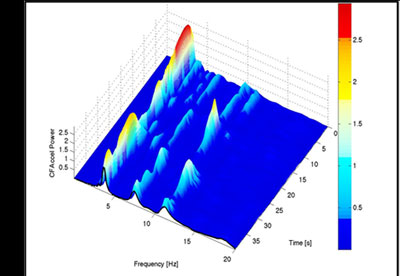Advances in Vortex Induced Vibrations
MOTIVATION:
Vortex induced vibration (VIV) is a phenomenon observed for bluff bodies in a free stream. The shedding of asymmetric vortices from the bluff body results in oscillating hydrodynamic forces acting on the body and thus leading to its vibration. The vibrations cause severe fatigue damage to structures and thereby reduce the operation life of the structures. The study of VIV of long flexible cylindrical structures and the development of VIV suppression methods is therefore an area of active research interest.

Fig. 1: The vortex shedding pattern observed near (left) the Guadalupe Island off Baja California and (right) the Juan Fernandez Islands near Chile. Images taken from the NASA Earth Observatory website.
Flow passing bluff bodies in nature displays vortex shedding phenomenon such as the wake pattern observed as air flows past an island as shown in Fig.1 above. The asymmetric nature of the vortex shedding apply oscillating forces on the body and thus induce vortex induced vibration (VIV).
VIV causes severe fatigue damage to long cylindrical structures, which are widely employed in various ocean engineering applications, such as marine risers, oil platforms and mooring lines.
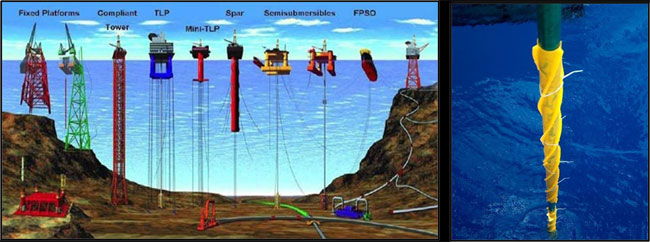
Fig. 2: The various off-shore structures that are in used today (left) and the use of strakes on oil pipes to suppress VIV (right). Images from the National Oceanic & Atmospheric Administration & MIT Ocean Engineering websites
Our research in VIV aims to explain the various physical processes involved and how such knowledge may be used to predict the extent of fatigue damage to structures or how such vibrations can be suppressed. One commonly used suppression method is the use of strakes (see Fig.2 above) to break down the vortex shedding.
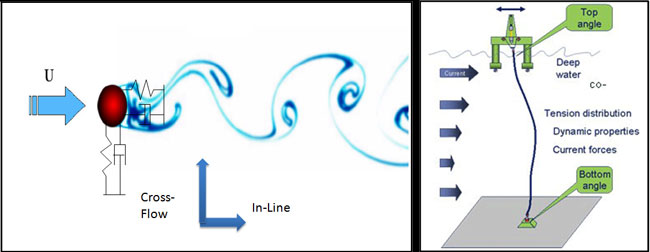
Fig. 3: Spring-dashpot model of a cylinder in a flow and the von Kármán vortex street: top view (left) and side view (right). Left figure adapted from An Album of Fluid Motion, Van Dyke (1982)
MODELING
VIV involves a complex fluid-structure interaction, and semi-empirical prediction models using a hydrodynamic database, like VIVA, SHEAR7 and VIVANA, are widely used in the offshore industry. The structural response is modeled accurately using linear and strip theory (Fig. 3), whereas the hydrodynamic loads are predicted using laboratory data, which require significant corrections before they get applied. Field data are used systematically to make such corrections in a meaningful way, and data from numerical simulations provide further insight into the mechanisms of VIV. Hence, there is a continuous dialogue between predictions using the experiment-based codes on one hand and field and experimental data on the other, as well as computational data.
EXPERIMENTAL STUDIES:
:
Experimental studies involve the measurement of the response of a cylindrical structure to an external flow. This can proceed in two ways – either by letting the cylinder vibrate freely in a flow or by forcing a prescribed oscillation in a flow.
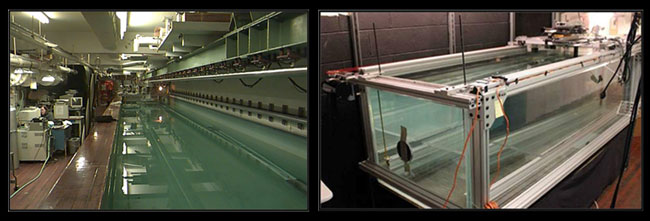
Fig. 4: The Large Towing Tank (22.5m long 2.4m wide and 1.2m deep)
Fig. 5: The Small Towing Tank (2.4m long, 0.9m wide and 0.64m deep). The carriage traverse holds two linear motors that are used to force cylinder motions both in the transverse and inline directions
Fig. 6: Power Spectral Density (PSD) of a laboratory VIV signal
Free vibration experiments are done in the MIT Towing Tank (Fig. 4) while the forced vibration experiments are carried out in the small towing tank (Fig. 5).
Experimental datasets were processed systematically through frequency and modal analysis. The 3D power spectral density (PSD) in Fig. 6 describes the dominant response frequ-ency and high harmonics. An experimental database is built from these experiments to extend the capabilities of VIV prediction to coupled inline and cross flow responses.
NUMERICAL SIMULATION:
Numerical simulations play an important part in our research as it affords the flexibility of varying different parameters that may not be possible in laboratory experiments. Additionally, numerical simulations give a lot more details about the physical features than that which can be collected with experiments. More complex VIV problems, therefore benefit from the development and use of numerical methods.
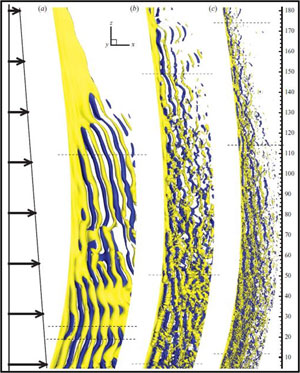
Fig. 7: Instantaneous iso-surfaces of spanwise vorticity downstream of a flexible cylinder in a sheared flow at (a) Re=100, (b) Re=330 and (c) Re=1100 (from [5])
Real applications of VIV problems often involve a cluster of cylindrical structures and it becomes important to see how the response of one cylinder might affect the response of another in its wake. This problem involves the study of several parameters and as such the use of a numerical method is optimal.
Nektar, the numerical code used, is based on the spectral/hp element method. This code has been used to map out the flow and structural response features ofunder of a single cylinder under various conditions such as different boundary conditions, inflow velocity profiles, aspect ratios and structural properties.
The current focus is to study VIV and WIV (wake-induced-vibration) in the interaction of two cylinders in a tandem arrangement. Parametric studies varying the cylinder separation and skew angle to study the influence on upstream and downstream cylinder response will give a global picture of the interaction problem, while a study of the flow features in the cylinder gap will reveal the mechanism of such interactions.

Fig. 8: Vorticity (left) and pressure (right) plots for the flow past two cylinders in a tandem arrangement in a 2D numerical simulation using Nektar.
